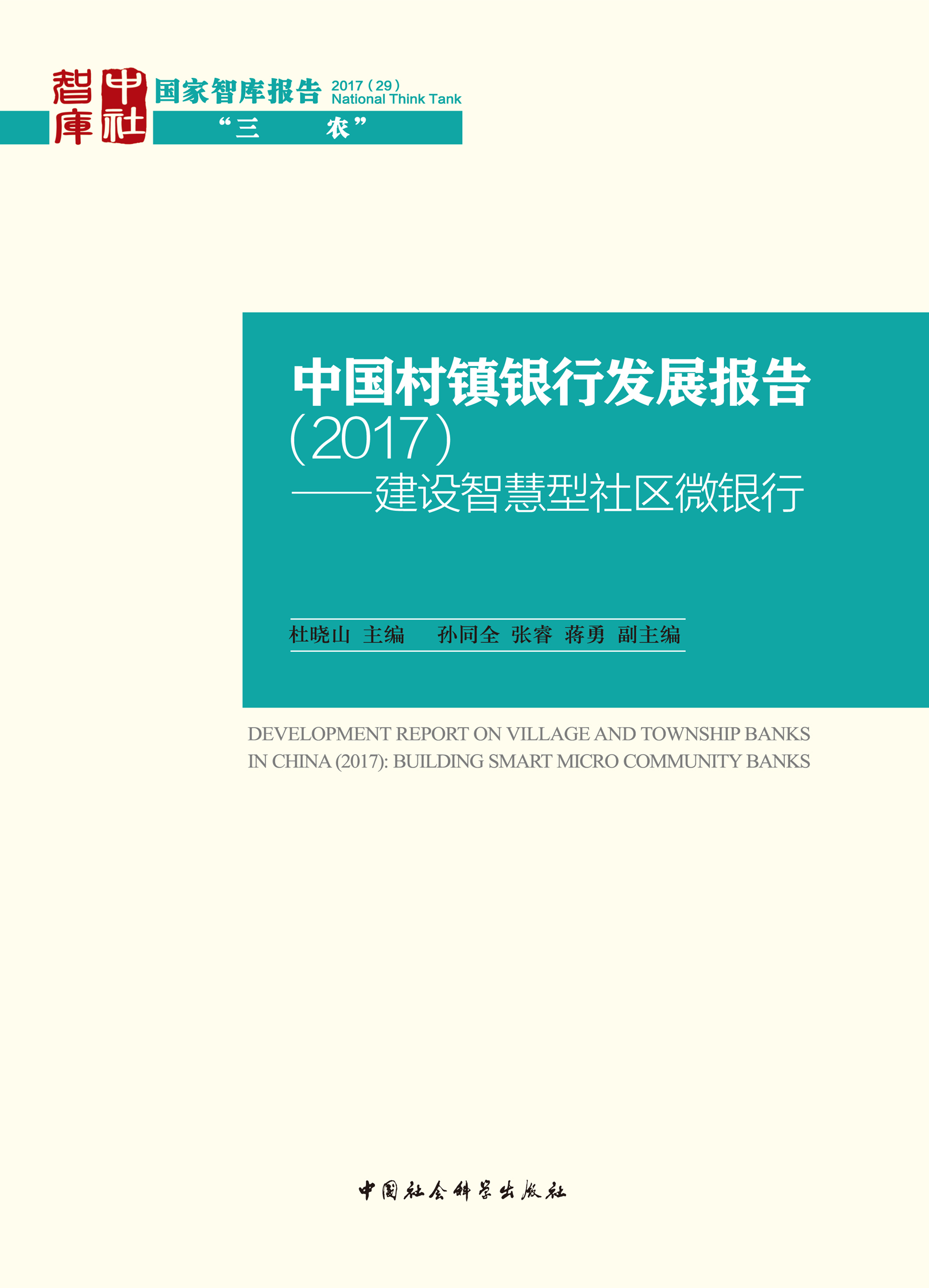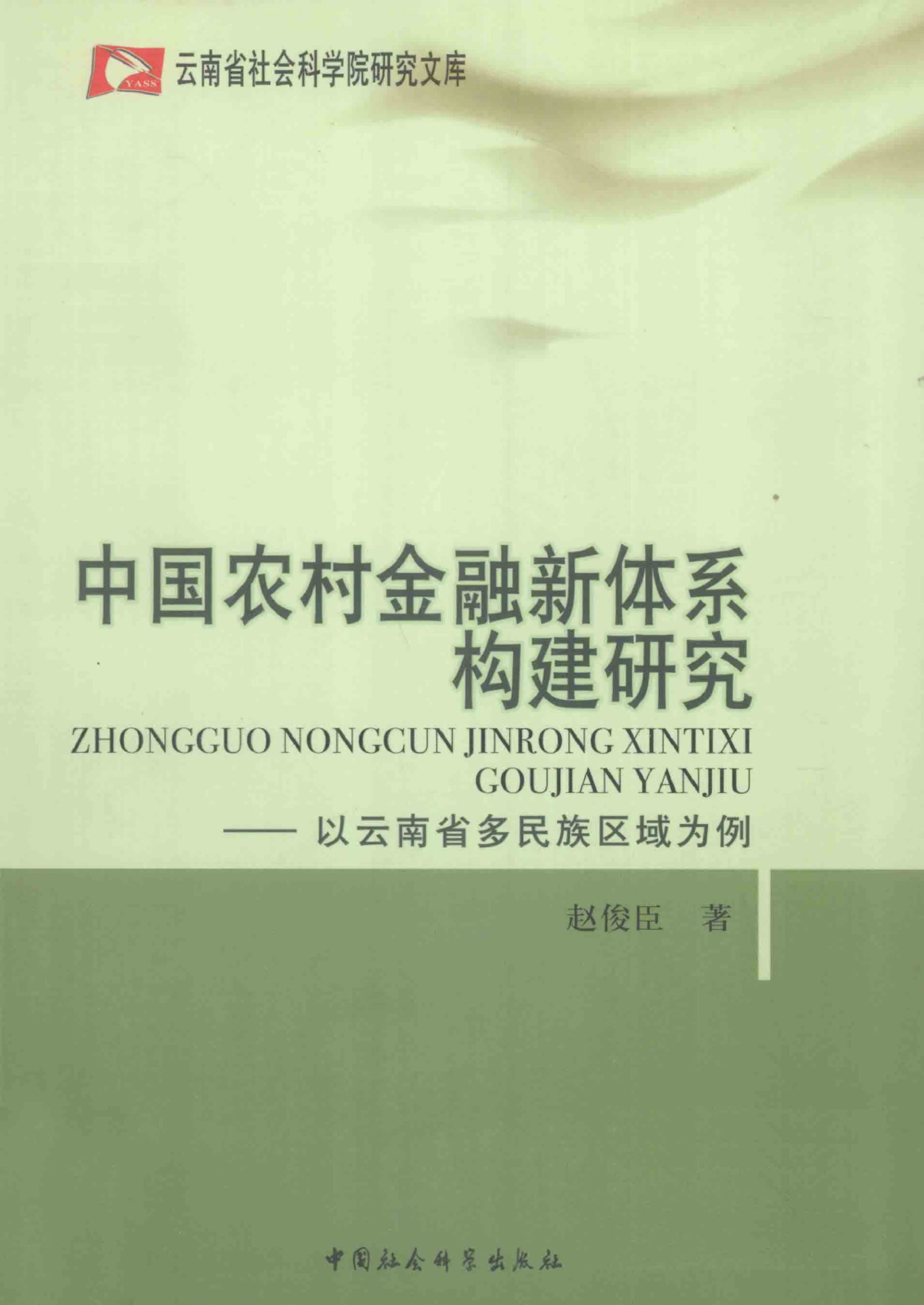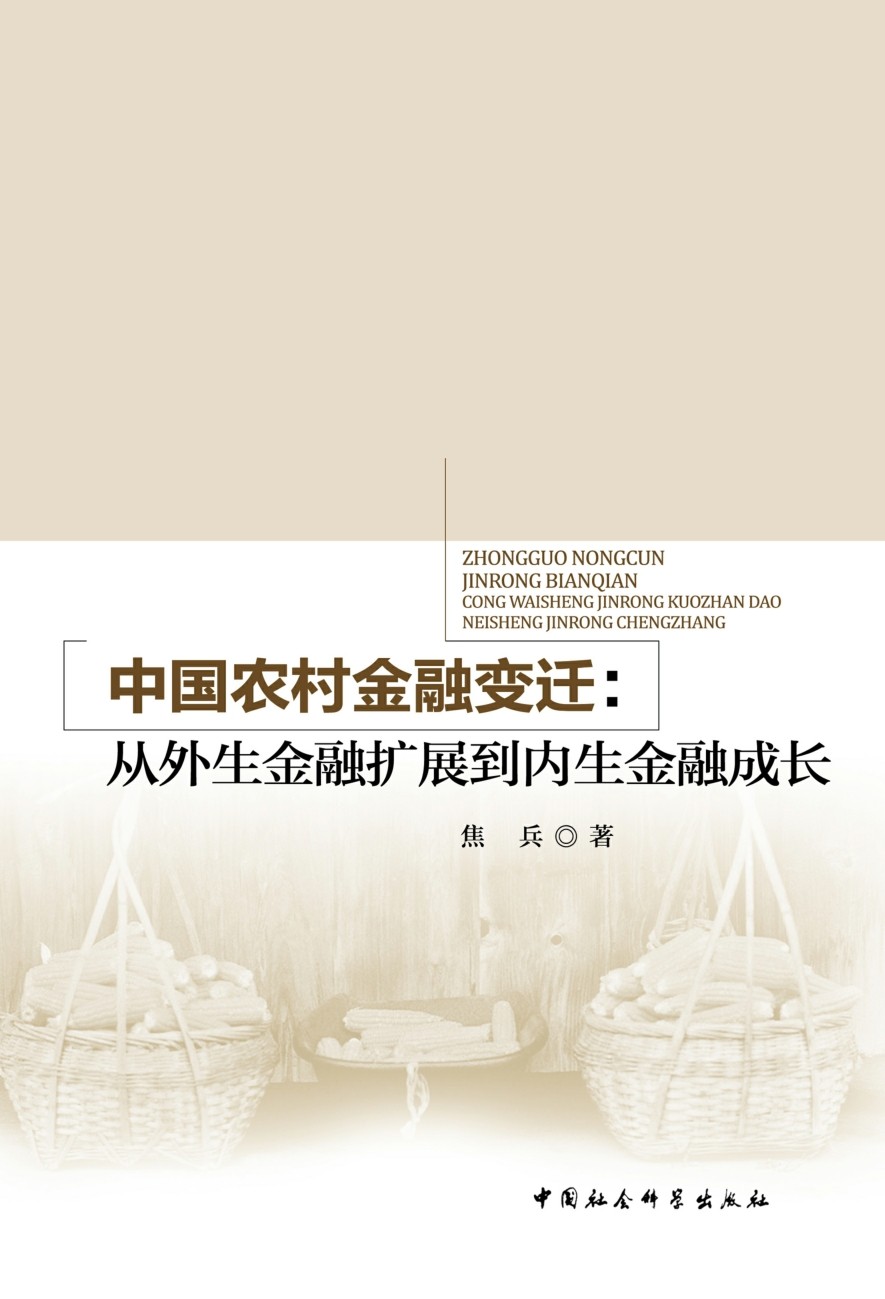内容简介
作者简介
目录
Since the first village and township bank was established in 2007,this new type of rural financial institution has been developing rapidly for ten years. The policy goals for setting up village and township banks were to solve the problems such as low coverage of banking financial institution in rural area,the lack of rural financial supply,and the insufficiency of competition. For the last 10 years,the village and township banks had provided financial services for many small and medium-sized enterprises and rural households,and have become a new force for filling the gaps of rural financial services,so that to some extent have achieved the policy goals.However,from their experiences and progresses,village and township banks’market positioning is not widely accepted by their stakeholders(including the originators,other enterprises and individual shareholders,executives and employees of village and township banks,even the local governments)in practice,even it is quite clear in policy. The lack of agreement within Village and township banks often becomes the important source of internal contradictions and mismanagement. Lack of consensus among the village and township banks is an important reason for the uneven development of the entire industry and the lack of industry benchmark.The village and township banks are almost at the bottom of Chinese banking system,it is much smaller than the other rural financial institutions in both overall and individualistic scales. However,it is not widely recognized among village and township banks’stakeholders. Some village and township banks granted large loan to compete with big banks for big customers,wishing to reduce costs and increase profits,while ignoring the constantly accumulating concentration ofcredit risk and the potential risk it contains.In the wave of financial technology,rural financial market is undergoing tremendous changes,not only increasing types and quantities of financial service providers,but also the diversified service products and modes. Financial technology contains great power. If the village and township banks could not realize the financial technology’s function of reducing costs,improving efficiency,expanding business channels,and enhancing customers’stickiness,while just content with the traditional marketing mode,being satisfied with the existing status,keeping steady developing,they may be at a disadvantage in market competition in the future.This report utilized the data both submitted by 116 village and township banks surveyed for the event of“China village and township banks comprehensive business development ranking”and collected from the website of China Banking Regulatory Commission,analyzed the development condition of village and township banks since 2016,including their development scale,distribution,financial performance and social performance,then analyzed the market positioning and financial technology application of village and township banks.This report consists of two parts:the main report and the case study. The main report consists of six chapters,they are the introduction,the new progress of village and township banks,the basic theory of community bank,the village and township bank’s positioning of“micro community bank”,the goal of constructing the“smartmicro community bank”,and the conclusion. The case study consists of the case analysis of village and township banks in China and the case analysis of foreign community banks. There were seven cases about Chinese village and township banks,including Yilong Huimin Village and Township Bank which was China’s earliest village and township bank in Sichuan province,Zhongmu Zhengyin Village and Township Bank which was China’s largest village and township bank in Henan province,Wuwei Huiyin Village and Township Bank whic hutilized financial technology well and deepened its services in rural communities in Anhui Province,Shihezi NationalVillage and Township Bank which served custom in border area in Xinjiang,Xinjin Zhujiang Village and Township Bank which resuscitated while went back to positioning of supporting agriculture and MSEs in Sichuan province,Fenxi Taihang Village and Township Bank which was of the minimum registered capital in Shanxi province,and Zhongyin Fudeng Group which launched the largest amount of village and township banks intensively. The Hausbank(House bank)system in Germany was taken as the case of foreign community banks.This report combined the normative analysis and empirical analysis,taking the community bank theory as basic analysis framework,described the characteristics of village and township bank by the questionnaire survey data,typical case analysis and literature review. The sources of data used for analysis in this report were as follow:1)the website of China Banking Regulatory Commission,the website of the People’s Bank of China,the central and local government websites,and published papers and yearbooks. 2)the information submitted by 116 village and township banks surveyed for the event of“ChinaVillage and township banks comprehensive business development ranking”.3)the information from investigation in first half of 2017 on more than 20 village and township banks and their sponsor banks,local regulators,and survey on the social,economic and financial environment where the investigated banks located,in the eastern,central,western and northeastern part of China.Since 2016,the macro development policy and regulatory policy related to village and township bank have stayed steady. By the end of 2016,there were 1519 village and township banks set up nationwide,and the amount of village and township banks in the central region is as many as in eastern region,but more than that in the western regions. In addition,less than 50% of village and township banks established in the national poverty counties,which means there was still a lot of room for further implementation of admittance policy.It is found that in 2016,for those more developed village and township banks,their total asset increased significantly,deposits and loans business was growing stably;liquidity index remained stable but slightly decreased,which correspond with the trend of regulatory indicators;performance index is even better than the average level of commercial banks;the main risk indicators were in line with regulatory requirements,the overall risk is controllable. In summary,the village and township bank has become a new stable force for stabilizing county economic and supporting SME and agriculture,and has played an important role in activating rural financial market,improving rural financial system,developing inclusive finance and supporting rural economic and social development. At the same time,the coverage of village and township banks’ services continued to expand and deepen. However,there were differentiation among village and township banks in customer service,information transparency and customer protection,community relations and staff training,etc.The differentiation of their financial indicators is even more serious.Village and township banks should aim at micro community bank sin county areas. Community banks originated from small banks serving communities and businesses and residents within community in USA,Europe and other countries. In this report,the community bank is defined as a banking financial institution which registered within the county level and operated as an independent legal status and carried out in the administrative area of the registered territory. Because of the limitation by policies and their commercial nature,village and township banks are community banks. More than 90% of the village and township banks were set within county field,with the characteristics of legal person in county areas. In addition,the business scope of village and township banks is limited in their administrative areas,with obviously local characteristics in staffing,funding sources,and products and services. Its short decision chain,quick decision-making process and flexible mechanism is suitable for the market positioning of“focusing on the county,serving community,supporting MSEs and agriculture”. Compared with other agriculture related financial institutions,village and township banks have the characteristics of“micro”commercial bank in terms of their scales andtheir customers individually.Financial technology is changing the boundary of financial services,has become an important part of village and township banks’competitiveness. Based on the data of 116 surveyed village and township banks,most of the village and township banks were still in the initial stage of financial technology application. There are still many problems in talent reserve,business system development,project construction and daily operation etc. The informatization levels of village and township banks should be improved.Based on the above analysis,the conclusions of this report are as follows:1.The policy environment is stable and friendly for the development of rural banks,though there is still some room for improvement.2.The village and township banks have become a new force in promoting county economic and social development and supporting agriculture and small and micro enterprises,and have achieved good social performance. However,there were big differences among village and township banks,and their social performance awareness and management system need to be enhanced urgently.3.In 2016,the overall development of village and township banks is smoothly,and their financial performances look good. However,there were big differences in their operation conditions. In the future,village and township banks may begin to enter the period of intensified differentiation.4.The coverage of village and township banks in the counties which were national poverty alleviation and development work focus on or were in concentrated contiguous poverty areas is less than half,which is far away from the goal of government to set up village and township banking system.5.The village and township bank has obvious characteristics of micro community banks,with the advantage of developing and using the community customers’ soft information. Therefore,their market positioning should be the rural financial market within county field. However,not all of the village and township banks can understandand and take such market positioning.6.The village and township banks have made some achievements in the use of financial technology,but they are still in the initial stage and facing many difficulties. They should expand and optimize their financial services channels and improve their services.7.Both the increasing competition in the rural financial market and the big gaps among their operating and managing levels have aggravated the differentiation of the village and township banks,which added the uncertainty to their developing prospects. The next five years is the key period for their development. The village and township banks might be entering steady development phase as a new form of rural financial organizations if everything goes well,otherwise,a large number of village and township banks may face to reorganization,or be merged,or even bankruptcy.Based on the above conclusions,the policy suggestions of this report are as follows:1.To adjust the relative clause in Macro Prudential Assessment according to the micro-bank characteristics of village and township banks,to continue and truly implement the fiscal and tax supporting policies.2.To make preferential policies to promote the full coverage of village and township banks in poor areas;to encourage the chief sponsor bank and local private investor to launch village and township banks in poor areas.3.Village and township banks should clearly recognize their basic characteristics of micro community banks and their market positioning of small and micro enterprises in counties and“three rural issues”field,then actively strengthen their own community characteristics.4.Rural banks should focus on building the“smart micro community banks”with“double wheel drive”system,which means to take full advantages of both financial technology and their unique positioning as community banks.5.To build the tech-platforms which were scaled,intensive,professional and personalized to support the financial technology services the village and township banks required.6.To study and formulate the appropriate with drawal mechanism and Merger Policy for village and township banks poorly managed.7.To encourage,advocate,support and explore the development of the“social enterprise”village and township banks which truly focus on the deeply inclusive financial services for grassroots.Key Words:village and township bank,community bank,micro bank,financial technology,smart bank
全部显示∨
蒋勇,中国村镇银行发展论坛组委会秘书长,中国县镇经济交流促进会副秘书长,《中国村镇银行》副主编,自2007年以来,一直致力于村镇银行的发展研究与业务咨询。
二 村镇银行新进展(一)2016—2017年政策新进展
(二)村镇银行发展规模
(三)村镇银行分布
(四)村镇银行财务绩效
(五)村镇银行社会绩效
三 社区银行基本理论(一)社区银行的含义、特点与市场定位
(二)社区银行的产生与发展
四 村镇银行的社区微银行定位(一)村镇银行的社区性
(二)村镇银行的微型特征
(三)村镇银行业务传统而灵活
(四)村镇银行对县域发展的贡献与意义
五 建设智慧型社区微银行(一)村镇银行对金融科技的应用与效果
(二)村镇银行金融科技应用面临的问题
(三)村镇银行金融科技应用的努力方向
七 国内案例(一)四川省仪陇惠民村镇银行
(二)安徽省无为徽银村镇银行
(三)河南省中牟郑银村镇银行
(四)新疆石河子国民村镇银行
(五)中银富登村镇银行
(六)四川省新津珠江村镇银行
(七)汾西县太行村镇银行
(八)国内案例总结
八 国际案例:德国的管家银行制度(一)德国的金融制度概况
(二)管家银行的特点
(三)管家银行制度的作用
(四)管家银行制度的适用性与局限性
(五)管家银行制度的变迁与未来
(六)总体评述与对中国的意蕴
参考文献









